
How to Use MT3608: Examples, Pinouts, and Specs
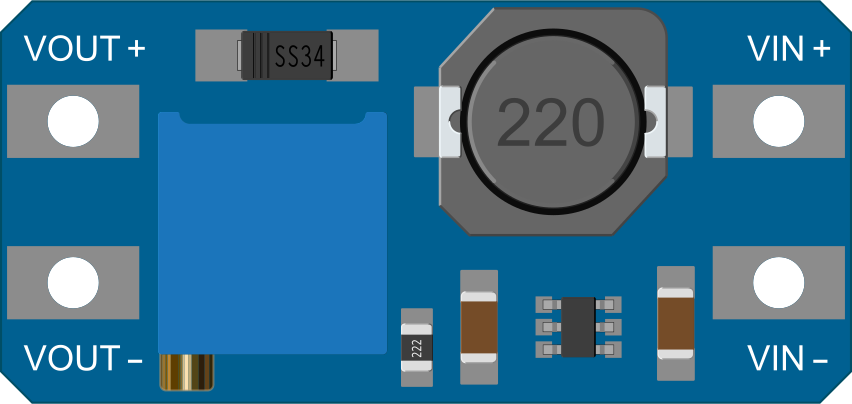
 Design with MT3608 in Cirkit Designer
Design with MT3608 in Cirkit DesignerIntroduction
The MT3608 is a step-up (boost) voltage regulator module designed to provide a higher output voltage than the input voltage it receives. This component is widely used in battery-powered devices, portable electronics, and any application where voltage boosting is required to power electronics that operate at a higher voltage than the power source can provide.
Explore Projects Built with MT3608
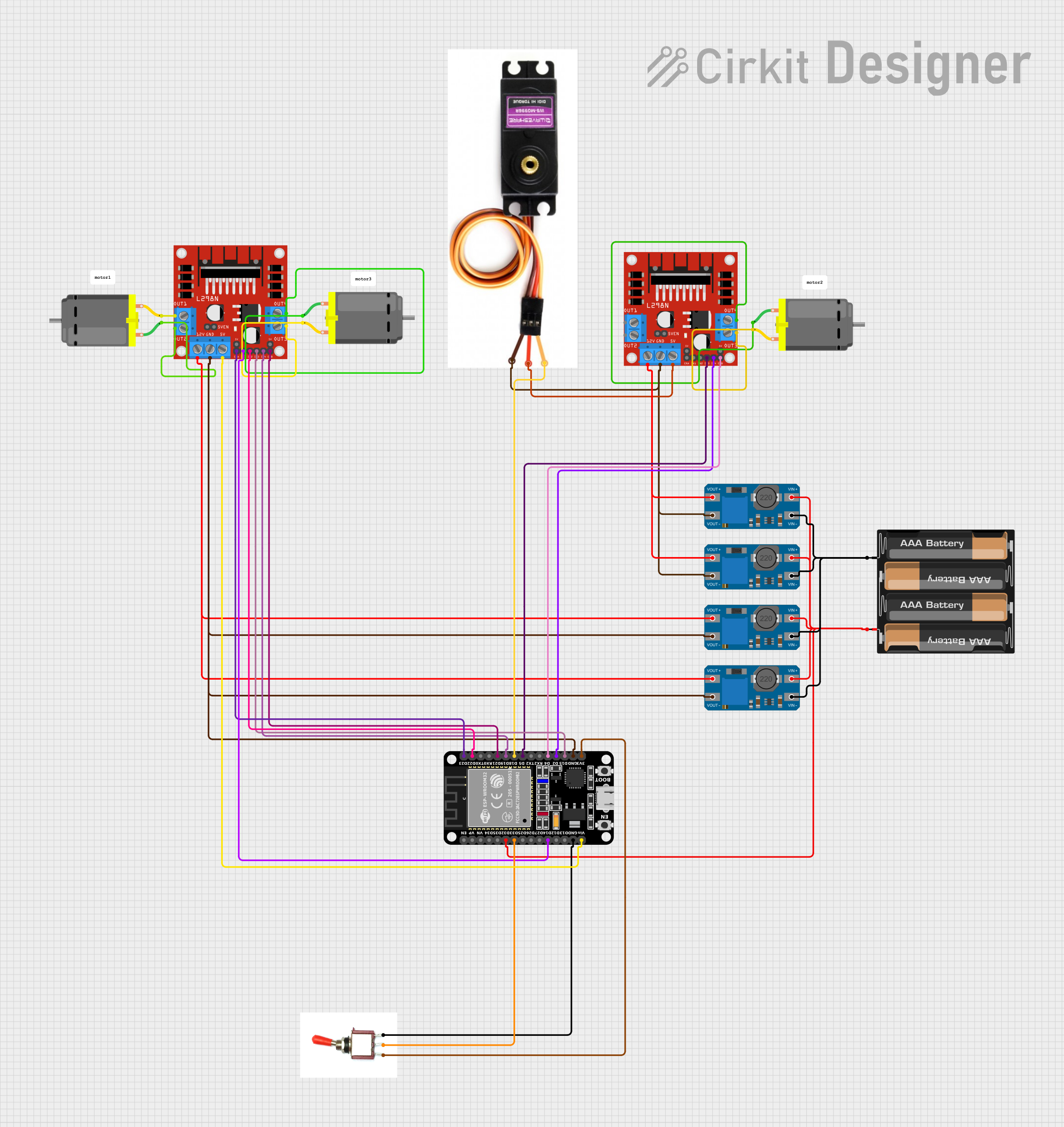
 Open Project in Cirkit Designer
Open Project in Cirkit Designer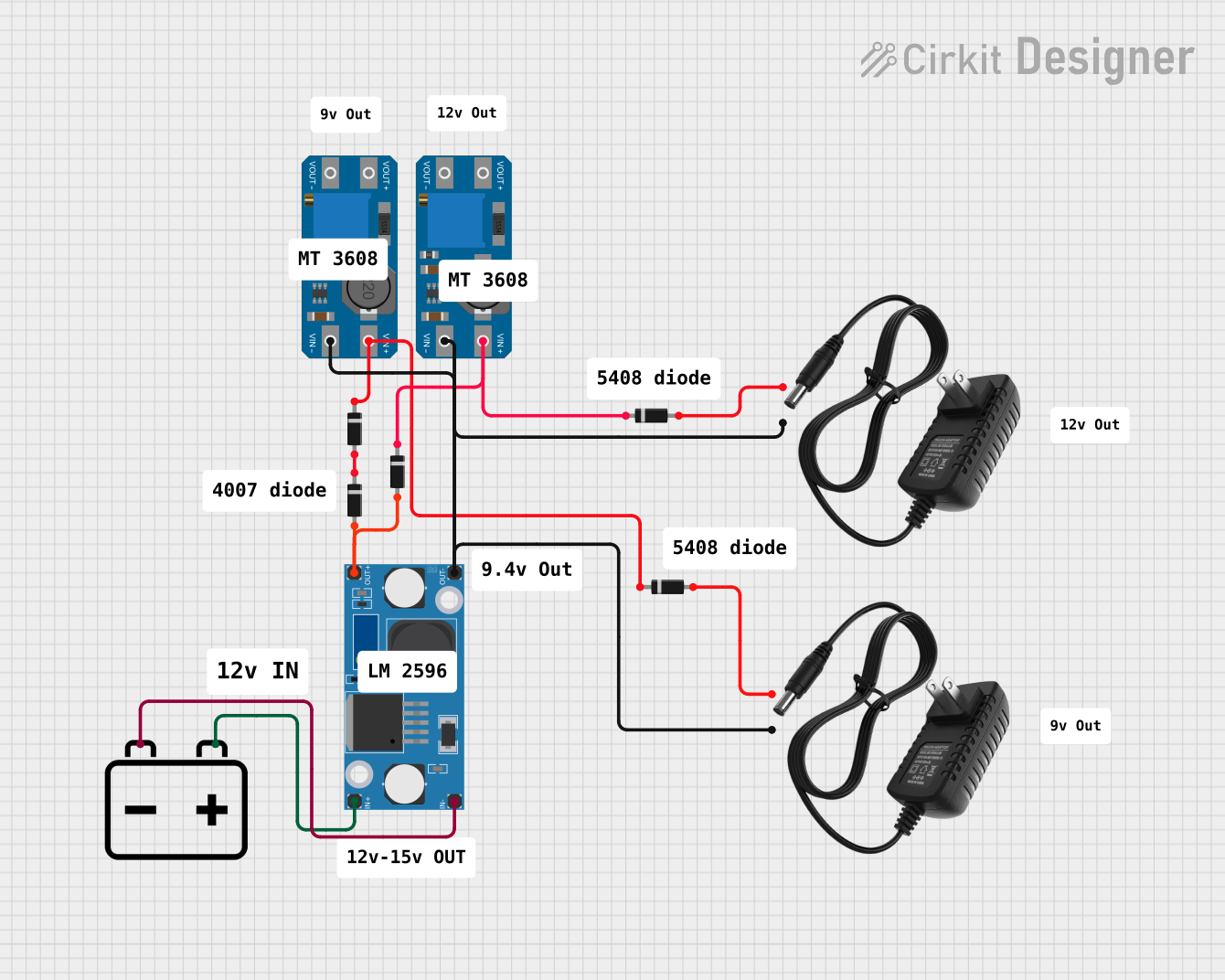
 Open Project in Cirkit Designer
Open Project in Cirkit Designer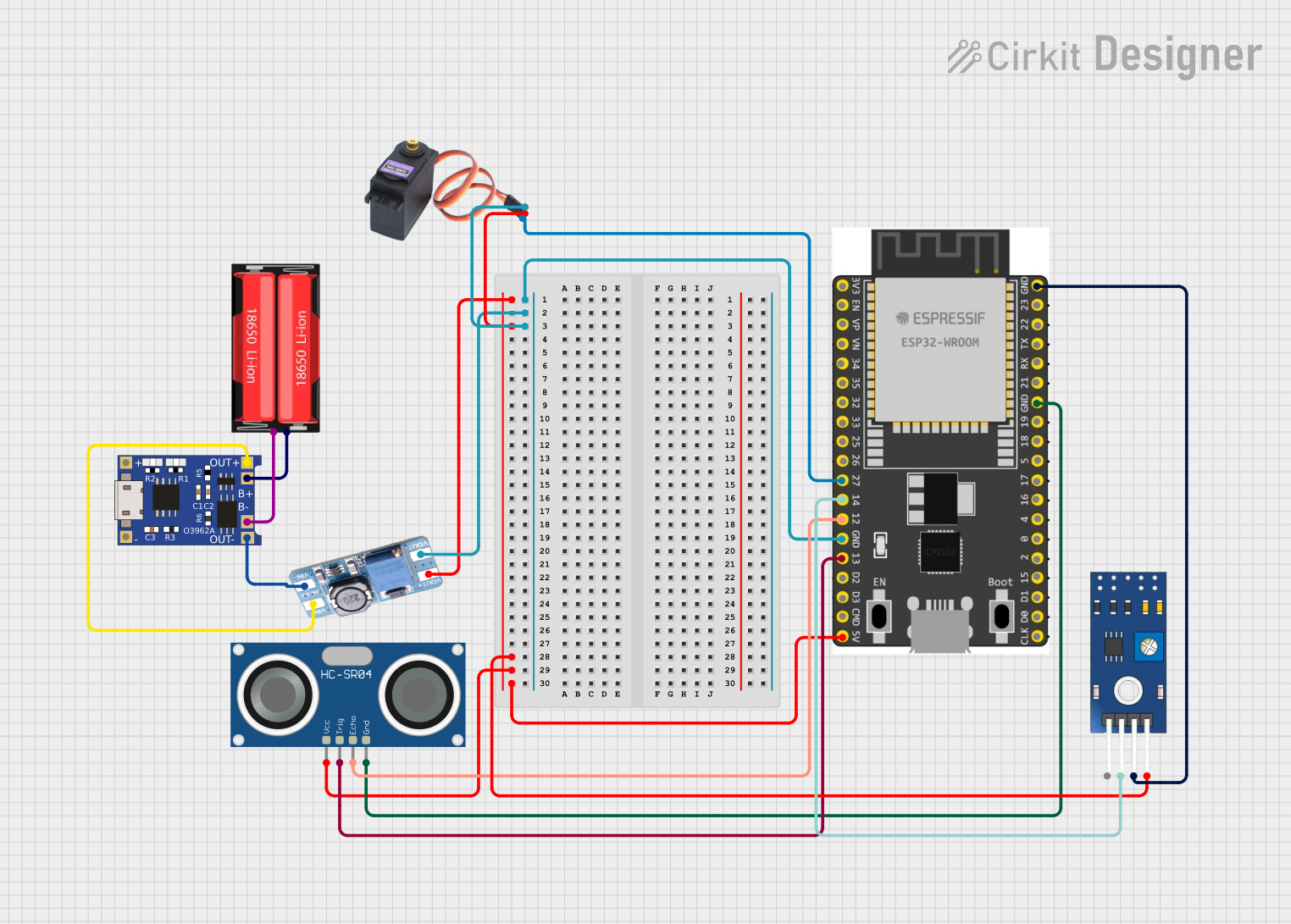
 Open Project in Cirkit Designer
Open Project in Cirkit Designer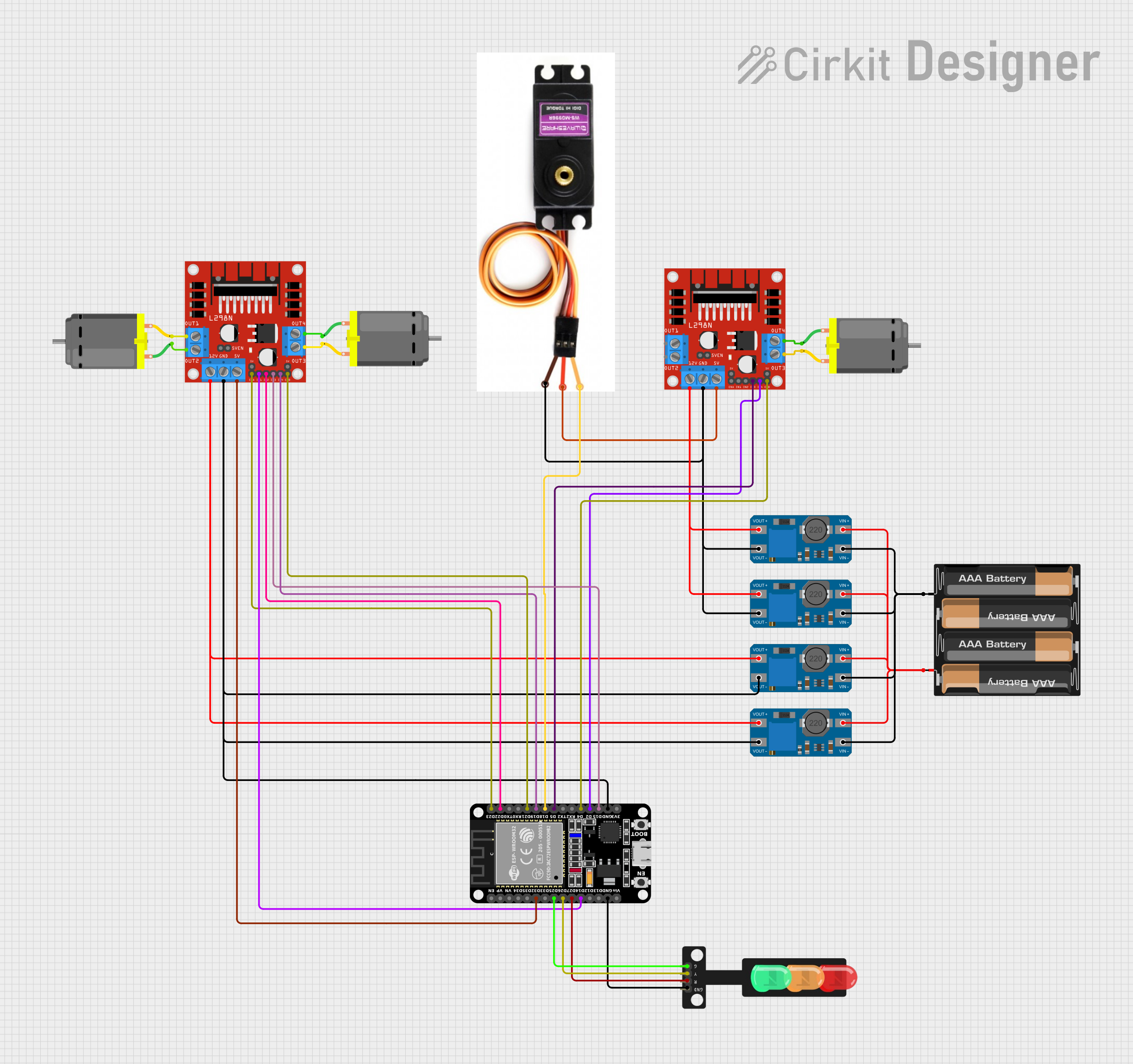
 Open Project in Cirkit Designer
Open Project in Cirkit DesignerExplore Projects Built with MT3608

 Open Project in Cirkit Designer
Open Project in Cirkit Designer
 Open Project in Cirkit Designer
Open Project in Cirkit Designer
 Open Project in Cirkit Designer
Open Project in Cirkit Designer
 Open Project in Cirkit Designer
Open Project in Cirkit DesignerCommon Applications and Use Cases
- Powering 5V or 12V devices from a lower voltage battery
- Driving LED strings that require a higher operating voltage
- Portable power supplies for electronic devices
- Energy harvesting and solar-powered circuits
Technical Specifications
Key Technical Details
- Input Voltage Range: 2V to 24V
- Maximum Output Voltage: 28V (adjustable via onboard potentiometer)
- Maximum Switch Current: 2A
- Efficiency: Up to 93%
- Switching Frequency: 1.2MHz
- Built-in over-temperature protection
Pin Configuration and Descriptions
| Pin Number | Name | Description |
|---|---|---|
| 1 | VIN | Input voltage to the module (2V to 24V) |
| 2 | GND | Ground reference for the module |
| 3 | VOUT | Regulated output voltage (up to 28V) |
| 4 | GND | Ground reference for the output |
Usage Instructions
How to Use the MT3608 in a Circuit
- Connect the input voltage source to the VIN and GND pins.
- Connect the load to the VOUT and GND pins.
- Adjust the onboard potentiometer to set the desired output voltage. Use a multimeter to monitor the output voltage while adjusting.
- Ensure that the input voltage is at least 2V to start the boost conversion process.
Important Considerations and Best Practices
- Do not exceed the maximum input voltage of 24V to prevent damage to the module.
- The output voltage must be set higher than the input voltage for the module to operate correctly.
- Avoid loading the module beyond its maximum switch current of 2A.
- Provide adequate cooling if the module is expected to operate near its maximum ratings.
- Keep the input and output wiring as short as possible to minimize losses and electromagnetic interference.
Troubleshooting and FAQs
Common Issues Users Might Face
- Output voltage is lower than expected: Ensure that the input voltage is sufficient and the potentiometer is correctly adjusted.
- Module is overheating: Check if the current draw is within the module's limits and improve cooling if necessary.
- No output voltage: Verify connections and input voltage, and ensure the module is not damaged.
Solutions and Tips for Troubleshooting
- If the output voltage cannot be adjusted, replace the potentiometer or the entire module if necessary.
- In case of overheating, reduce the load or improve heat dissipation with a heatsink or better airflow.
- For no output, double-check wiring and solder joints for any faults or loose connections.
Example Code for Arduino UNO
The MT3608 does not require any code to operate as it is not a programmable device. However, if you wish to monitor the output voltage using an Arduino UNO, you can use the following code to read the voltage through an analog input pin.
const int analogPin = A0; // Analog input pin connected to VOUT of MT3608
const float referenceVoltage = 5.0; // Reference voltage of Arduino UNO
void setup() {
Serial.begin(9600);
}
void loop() {
int sensorValue = analogRead(analogPin); // Read the analog value
float voltage = sensorValue * (referenceVoltage / 1023.0); // Convert to voltage
Serial.print("Output Voltage: ");
Serial.println(voltage);
delay(1000); // Wait for a second before reading again
}
Remember to use a voltage divider if the output voltage of the MT3608 is expected to exceed the reference voltage of the Arduino UNO to prevent damage to the microcontroller.